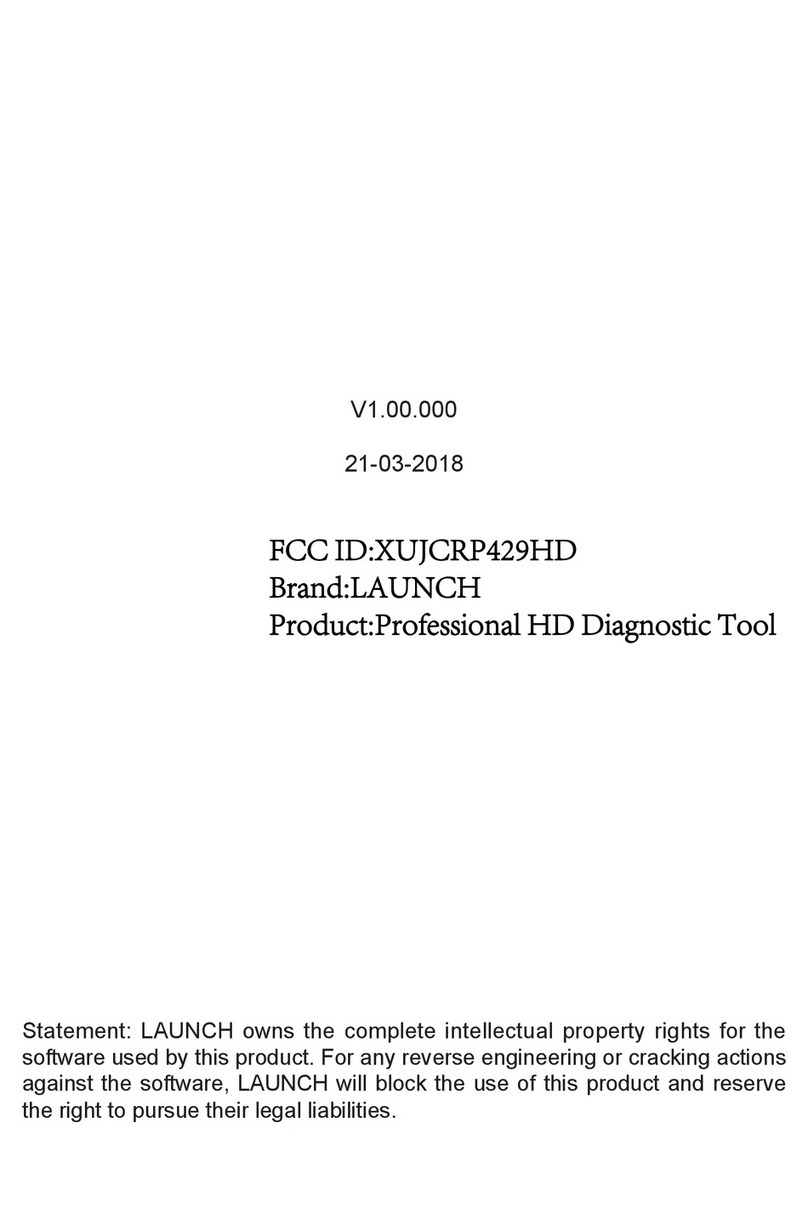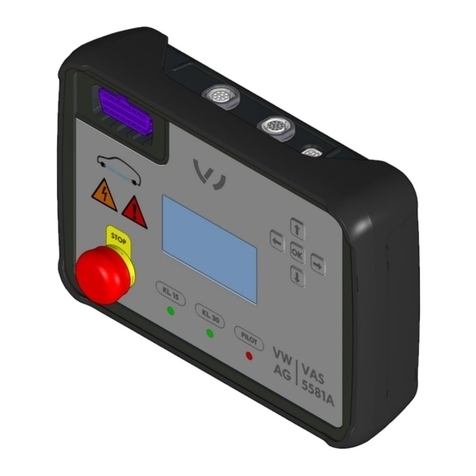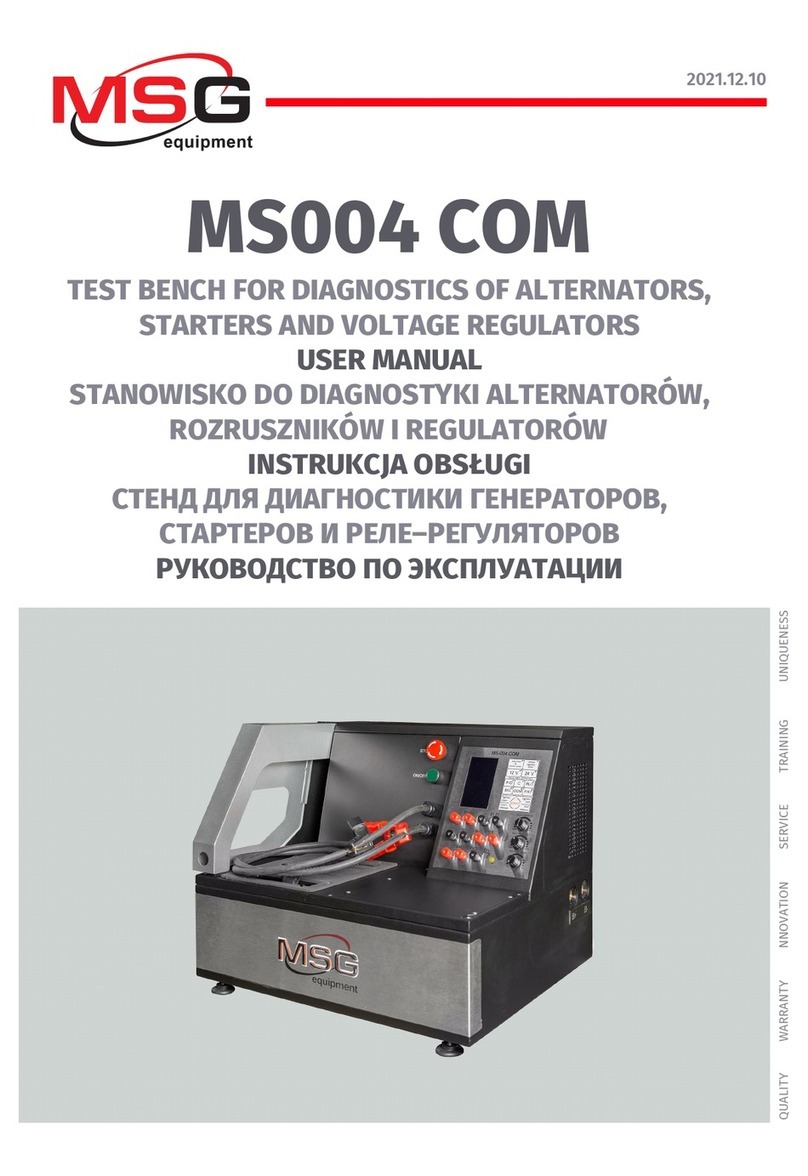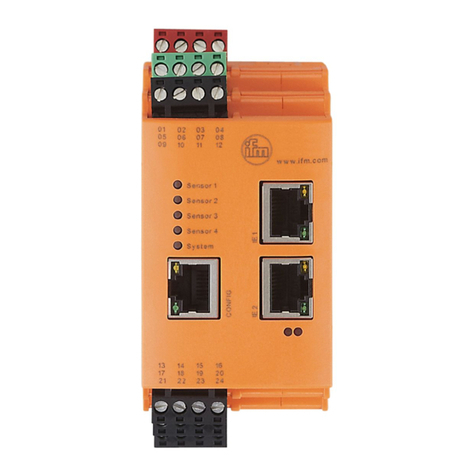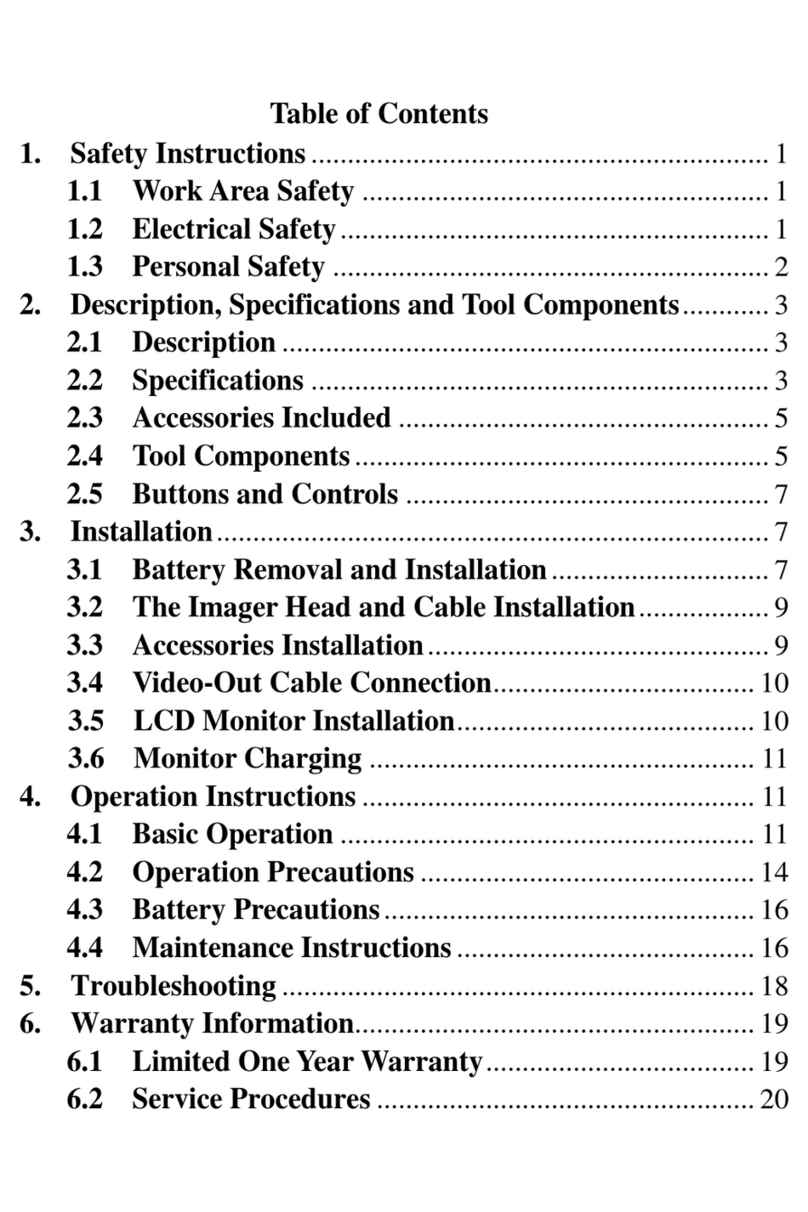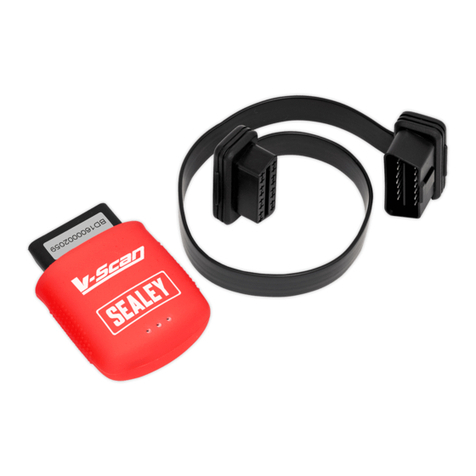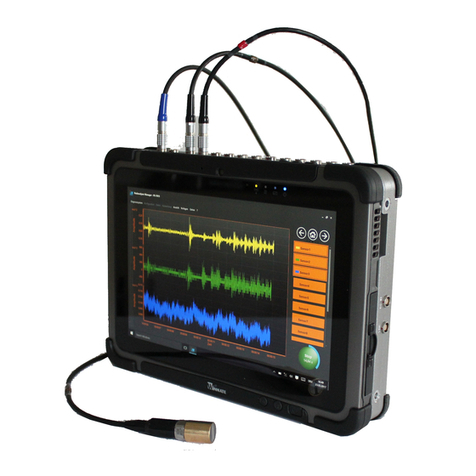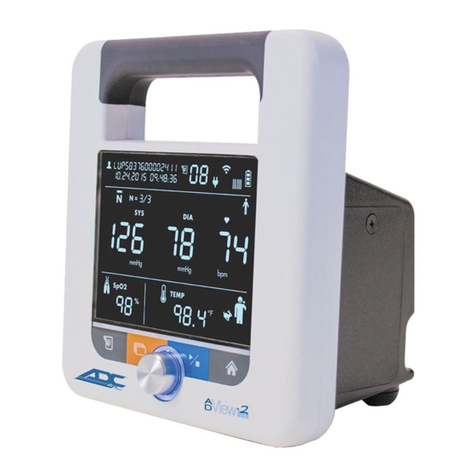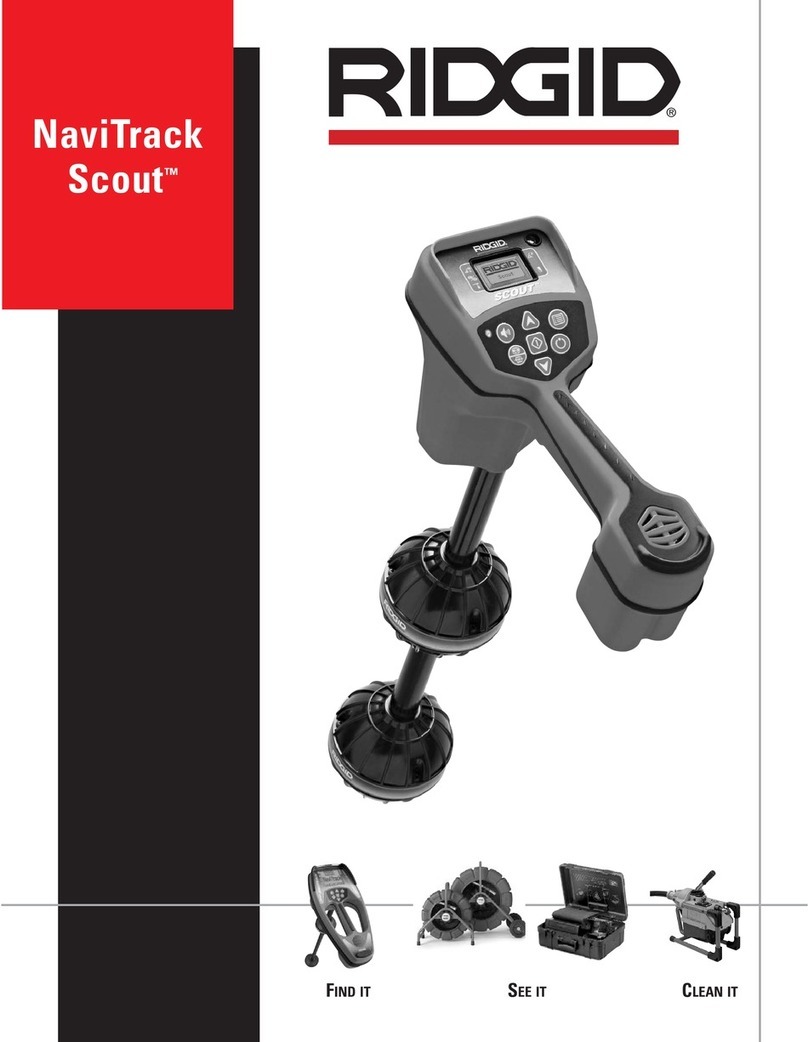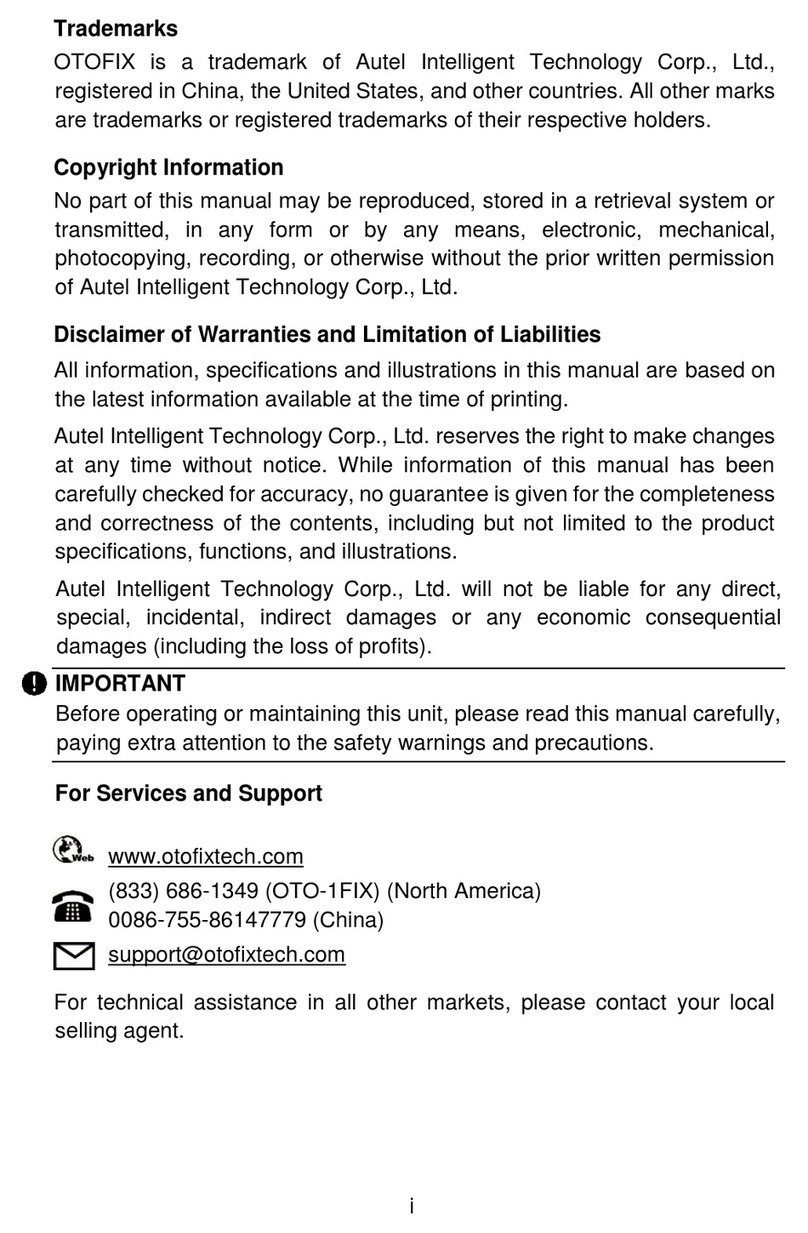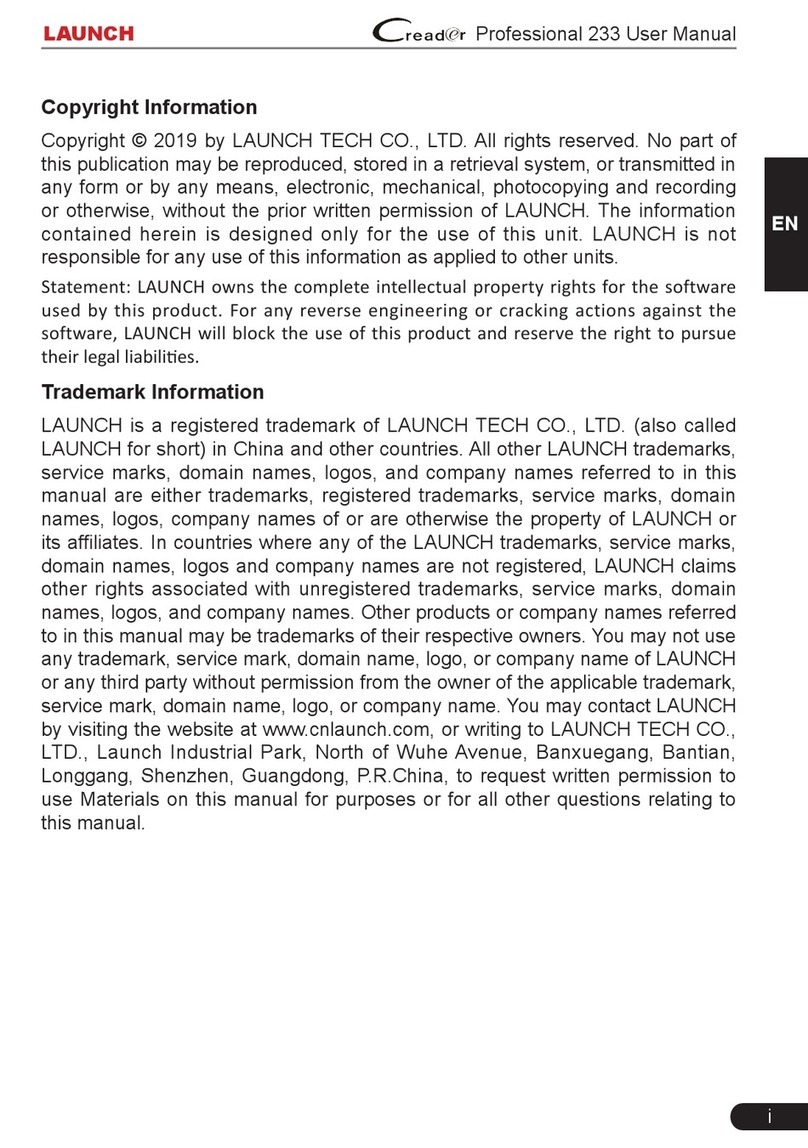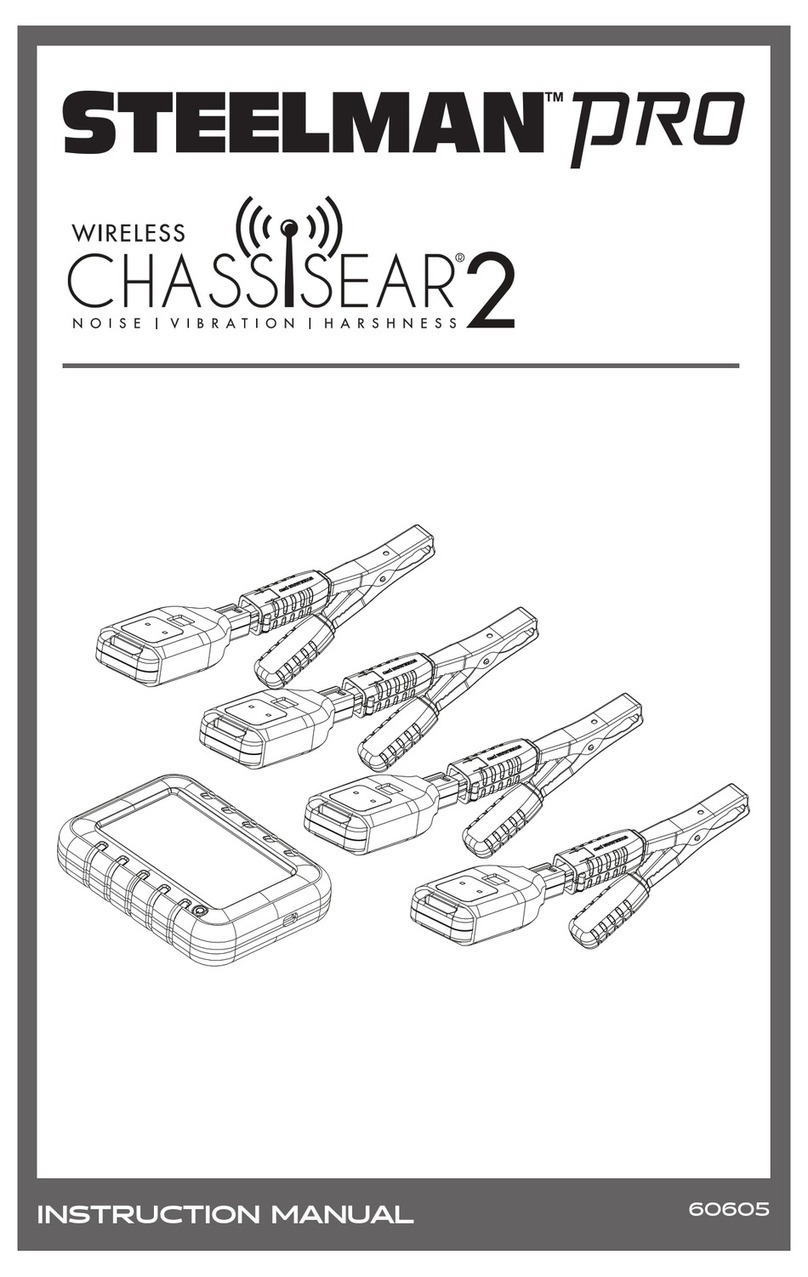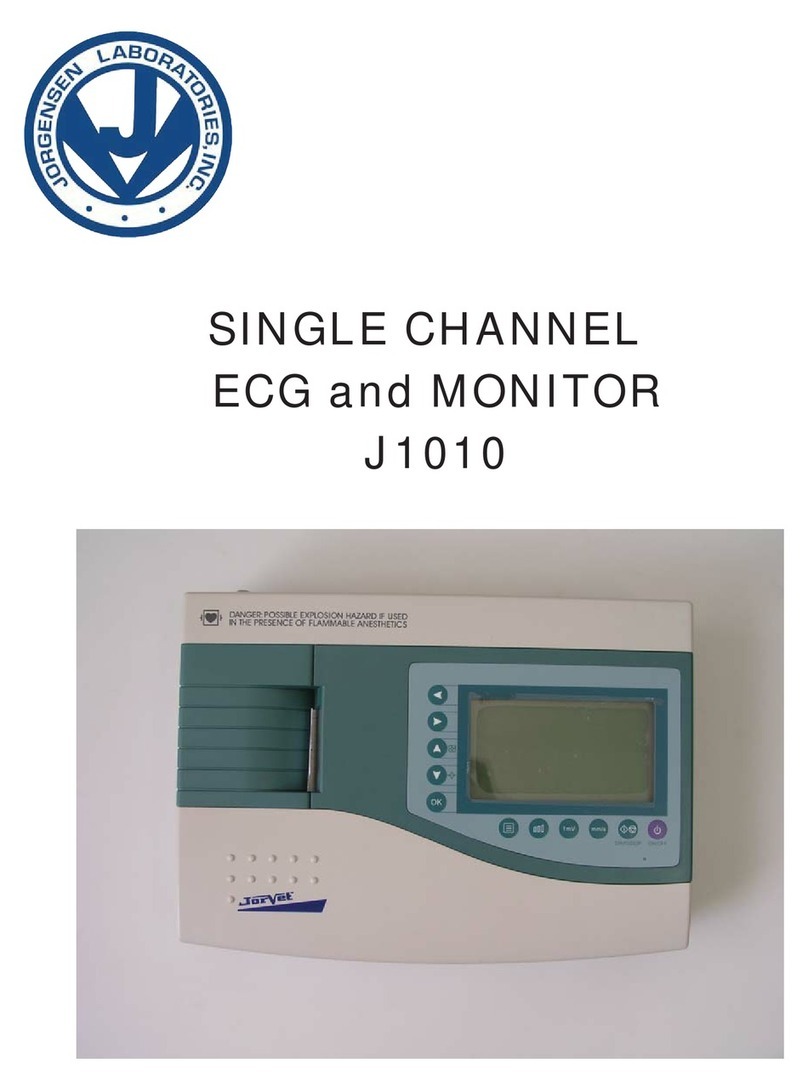Kowa VX-20 User manual

INSTRUCTION MANUAL
RETINAL CAMERA
Kowa
KOWA VX-20 US


I
Accept our congratulations on your purchase of KOWA VX-20.
KOWA VX-20 is a retinal camera which is capable of mydriatic and non-mydriatic photography.
This manual provides a description of the operation procedures of KOWA VX-20 and important precautions
to be observed during its use.
Please read this manual carefully to assure that the instrument can demonstrate its full capabilities and work safely.
After you have nished reading, keep this manual in an easily accessible location near the instrument for fu-
ture reference.
Operational considerations for safety
This manual describes important precautions to be observed when you use this system to assure that the
system is used safely without causing any damage to the human body or property of the purchaser and
other persons.
The designations and pictorial symbols used in this manual have the following meanings.
These should be fully comprehended before reading the text of this manual.
Meanings of designations
Warning If the instrument should be operated wrongly, there may incur a risk
of causing death or serious injury.
Caution If the instrument should be operated wrongly, there may result in a
bodily injury*1 or damage to property*2.
*1 A bodily injury means an injury, burn, electrical shock and so forth that will not necessitate
hospitalization or long-term outpatient treatment.
*2 Damage to property means an extensive damage to a house and/or household goods as well as a
domestic animal and pet.
Meanings of symbols
Graphical indication of any danger (including warning and caution).
What is warned is explicitly and pictorially indicated by a picture or
its associated message on or near a pictorial symbol.
Graphical indication of prohibited operation (prohibitive item).
What is prohibited is explicitly and pictorially indicated by a picture or
its associated message on or near a pictorial symbol.
Graphical indication of any mandatory action (obligatory item).
What must always be done is explicitly and pictorially indicated by a
picture or its associated message on or near a pictorial symbol.
Disclaimer
Kowa is not responsible for:
• Any damage caused by re, earthquake, third party’s action, any other accident or user’s intentional or
unintentional error, abuse or use under abnormal conditions.
• Any damage resulting from use of the product or its malfunction (e.g. operating loss, shutdown, change/
loss of stored data and so forth).
• Any damage resulting from disobedience of what is described in this manual.
• Any damage resulting from, for instance, malfunctioning of instrument caused by a combination of con-
nected devices.
Introduction

II
Warning
Unplug
If any abnormal smell, sound, overheating or smoke should be detected, be sure to turn
OFF the main power immediately and then unplug the instrument from the power outlet.
Continued use of the instrument may cause the instrument to malfunction or cause a
re. Contact Kowa or your Kowa dealer for inspection immediately.
Warning
High-Voltage
When replacing the ash lamp and observation lamp, make sure the
instrument is turned OFF and then unplugged from the power outlet.
Wait for more than 5 minutes, or more than 30 minutes if immediately
after use, before replacing. Otherwise, there may occur electrical
shock.
When replacing the fuse, make sure the instrument is turned OFF and
unplugged from the power outlet.
If the fuse holder cover is removed with the instrument unplugged,
there may occur electrical shock.
Obligatory
Be sure to plug into the power outlet completely and securely.
Otherwise, there may cause a re or electrical shock.
Use a designated fuse only.
Otherwise, the instrument may malfunction or a re may break out.
Make sure that the instrument is properly grounded to protect from bodily injury.
Connect the plug into the three-wire grounding type outlet with ground wire.
Otherwise, there may occur electrical shock.
Prohibitory
Do not place a container or cup containing liquid near the instrument.
Spilled liquid entering into the instrument may cause electrical shock. If liquid should
be spilled into the instrument, turn OFF the main power and then unplugged from the
power outlet. Contact Kowa or your Kowa dealer for inspection.
Do not load the power outlet or cable with excess of its rated capacity.
If the main power cable should share a power outlet with other devices and the rated
capacity is exceeded, there may cause a re or electrical shock.
Do not insert any metal object into an air vent or opening of the instrument. It may
cause an instrument malfunctioning, re or electrical shock.
Disassembly prohibited
Do not disassemble, modify or repair the instrument yourself.
It may cause a re, electrical shock, instrument malfunctioning or bodily injury.
Refer all servicing to Kowa or your Kowa dealer.
The product assembled by yourself will not be covered under warranty nor any other
service.

III
Caution
Obligatory
The power supply must be provided for the sole use of this instrument.
Sharing a same power supply with other devices may cause malfunctioning.
When operating the instrument, take good care so that the patient’s eye, nose or
face does not come in contact with the instrument.
When moving up or down the chin rest to adjust the height of the patient’s eyes,
carefully manipulate the instrument while checking the position of the patients’ head.
A patient with the smaller head may get his or her head caught between the compo-
nents.
Handle the ash lamps and halogen lamps and fuses made of glass with good care.
Prohibitory
Do not pull the power supply cable when unplugging.
Doing so may damage the cable and cause a re or electrical shock. Be sure to hold
the plug when unplugging.
Do not plug or unplug the power supply cable with wet hand.
Otherwise, there may occur electrical shock.
Do not install the instrument at unstable location such as on a shaky base or a tilting
surface.
Doing so may cause the instrument to drop or fall over and result in a bodily injury.
Caution
High-temperature
Do not replace the flash lamp and halogen lamp immediately after
turning the OFF the main power.
You could be burned by the lamp heated to a high temperature.
Wait for more than 30 minutes to cool the lamp down before replac-
ing.
Do not touch the ash lamp bulb and halogen lamp bulb with your bare hand.
Otherwise, the lamp may reduce the light intensity and longevity.
Do not increase the observation illumination light intensity more than required.
Otherwise, the eye may be injured.
Do not increase the photography light intensity more than required.
Otherwise, the patient may experience pain and his or her eye may be injured.
The air vent must not be obstructed.
Obstructing the air vent may increase the internal temperature resulting in malfunc-
tioning of the instrument or a re.
Do not insert any metal object into an air vent or opening of the instrument.
It may cause electrical shock and malfunctioning of the instrument.
When operating this instrument, keep your ngers off the gap between the optical
head base and panning arm or the tilting arm and tilting component, or the gap of
the panning arm.
Otherwise, the ngers may be pinched and injured.
Instruct the patient not to place his or her ngers on the instrument.
Do not wipe the outer surface of the instrument with solvents such as benzene, or-
ganic solvent, ether.
Doing so may cause discoloration or degradation.
Instruct the patient not to place his or her ngers on the instrument except for the
grips (optional accessory).
Otherwise, the ngers may be pinched and injured.
Do not use a sharp object to perform touch operation on the LCD monitor . It may
cause malfunctioning of the instrument.
Do not apply excess force when performing touch operation on the LCD monitor.
The optical component may move unexpectedly, resulting in an injury.

IV
Caution for ngers location
Caution
Keep your ngers off the location shown with the arrows in the illus-
tration when operating this instrument. Otherwise, the ngers may be
pinched and injured.
Instruct the patient not to place his or her ngers on the instrument.
Caution for contact
Caution
Take good care so that the patient’s eye, nose
or face does not come in contact with the loca-
tions shown with an arrow in the illustration
when operating the instrument.
Caution for air vent
Caution
The air vent shown with the arrows in
the illustration must not be obstructed.
Obstructing the air vent may increase
the instrument temperature and result-
ing in malfunction of the instrument or
a re.
Do not insert any metal object into an
air vent or opening of the instrument,
also. It may cause electrical shock and
malfunctioning of the instrument.

V
Meanings of symbols
Symbol for “Caution”.
Symbol for “Warning High-voltage”.
Symbol for “Caution High-tempera-
ture”.
Symbol for “Power ON”.
Symbol for “Power OFF”.
Symbol for “Type B applied part”.

VI
1. Operating environment
1) Instrument should be operated only by qualied and trained personnel.
2) Handle the instrument with care, and do not apply strong shock to the instrument.
3) Avoid high temperature and humidity, direct sunlight, and dust when installing and storing the instrument.
Strictly observe the following environmental conditions.
Operating Transporting and storing
Environmental temperature 10 to 35 °C
─
15 to +55 °C
Relative humidity 30 to 90 % 10 to 95 %
4) Avoid condensation when using, transporting or storing the instrument.
5) Do not connect a digital camera other than that supplied with this instrument. Using other camera may
adversely affect the safety or performance of this instrument.
6) Install the instrument in a room where the lighting is 5 lux or less which you may barely manage to read a
newspaper.
2. Precautions on electric system
1) When the instrument has not been used for a long period of time, inspect the items below.
Inspect if the objective lens is free from soils.
Inspect if intensity of the lamps appropriately adjustable.
2) Install the system in a location where there is little risk of the plug being pulled out while operating. If the
plug should be pulled out accidentally, be sure to turn OFF the main power before plugging the system
back in.
3) Kowa is not liable for malfunctions and/or damages resulting from maintenance and/or repairs performed
by the third party other than an agent authorized by Kowa.
4) Kowa is not liable for malfunctions and/or damages resulting from maintenance and/or repairs using parts
other than repair parts specied by Kowa.
5) The input voltage should always be maintained within ± 10% of the rated voltage.
6) Do not turn on the ash lamp and adjust photography light intensity at the same time.
7) Wait for approx. 1 minute until the instrument has safely started up.
8) Do not turn the main power ON and OFF in succession. Allow an interval of at least 10 seconds before
turning the main power ON and OFF.
9) Be sure to turn OFF the main power before connecting an external device.
10) Do not touch the patient and connectors at the same time as it may adversely affect the safety.
11) Disinfect using alcohol the parts accessible by the patient.
12) The power supply must be provided for the sole use of this instrument.
3. Precautions when using this instrument
1) Carefully handle the objective lens as soiled or scratched part of the objective lens may be imaged as
white spots.
2) Always cover this instrument when not in use in order to protect them.
3) Do not apply strong shock or force to the objective lens.
4) Set a dial or knob with clicking positions to its designated position.
5) Do not press sharp instruments or tools against the LCD monitor or add excessive force to the monitor.
6) Never disassemble or adjust this instrument by yourself as it uses precision parts which requires special
tool for doing so.
4. Disposal precautions
When disposing this instrument, applicable federal, state, and local regulations must be observed. Ensure
that disposal is handled by a licensed industrial waste disposal contractor in accordance with the applicable
regulations and ordinances.
5. Replacement of the Aluminum Electrolytic Capacitor
The aluminum electrolytic capacitor for the ash lamp, which is used in the power supply section of this
instrument, is a component requiring regular replacements. The useful life of this type of components
may be signicantly reduced depending the frequency and conditions in which this instrument is used. If
the capacitor is used beyond its useful life, its electrolytic solution may leak or drain, which can result in
abnormal odor, smoke, bursting sound, and other failures.
The design life of the capacitor is 50,000 flashes when used in an ambient temperature of 25°C.
This is, however, only a guideline, and the capacitor may need to be replaced earlier depending on the
usage environment. In order to ensure safe and stable operation of this instrument, early replacement
of the aluminum electrolytic capacitor is recommended. Replacement of components requiring regular
replacement, such as aluminum electrolytic capacitor, is supported as a paid service. For more information
about replacement of such components, please contact Kowa or your Kowa dealer.
6. Prescription device caution:
Caution
Federal law restricts this device to sale by or on the order of a Physician or Practitioner.
For US market
Operating precautions

VII
● Combination of medical electrical equipment and non-medical electrical equipment
IEC 60601-1-1 “Safety requirements for medical electrical systems” describes the components combination
grouped into various clinical settings. The brief overview of IEC 60601-1-1 is shown below.
Situation No.
Medically used room
Non-medically
used room
Feasible solution
(See clause 19 in all
situations)
Inside
the PATIENT
ENVIRONMENT
Outside
the PATIENT
ENVIRONMENT
1
1a Items A and B in
PATIENT ENVIRON-
MENT
A
IEC
60601
B
IEC
60601
1b Items A and B in
PATIENT ENVIRON-
MENT
A
IEC
60601
B
IEC
XXXXX
For B:Additional
protective earth or
separating transform-
er
1c Item A powerd
from specied power
supply in item B in
PATIENT ENVIRON-
MENT
A
IEC 60601
B
IEC XXXXX
For B:Additional
protective earth or
separating transform-
er
2
2a Item A in PATIENT
ENVIRONMENT and
item B in medically
used room
A
IEC
60601
B
IEC
60601
2b Item A in PATIENT
ENVIRONMENT and
item B in medically
used room
A
IEC
60601
B
IEC
XXXXX
For B:See 19.201
and its rationale
3
3a Item A in PATIENT
ENVIRONMENT and
item B in non-medical-
ly used room
A
IEC
60601
B
IEC 60601
or IEC XXXXX For B:See 19.201
and its rationale
3b Item A in PATIENT
ENVIRONMENT and
item B in non-medi-
cally used room
A
IEC
60601
B
IEC 60601
or IEC XXXXX
For B:Additional
protective earth or
SEPARATION DE-
VICE
KEY TO TABLE
• Additional protective earth : If necessary, provide additional protective earthing , which is permanently
connected(See also 58.201).
NOTE Equipment modication may be required.
• Separating transformer : If necessary, limit the ENCLOSURE LEAKAGE CURRENT, by using an ad-
ditional separating transformer according to annex EEE.
NOTE1 No equipment modication is required.
NOTE2 A separating transformer is a transformer with one or more input winding(s) separated from the
output winding(s) by at least basic insulation [IEC 60989].
• SEPARATION DEVICE : If necessary, apply SEPARATION DEVICE.
• IEC 60601 : MEDICAL ELECTRICAL EQUIPMENT in compliance with IEC 60601.
• IEC XXXXX : Non medical equipment in compliance with relevant IEC safety standards.
Common protective earth
Protective earth
Protective earth with
potential difference

VIII
1. Precautions on use of medical electrical system
1) All components of this medical electrical system may be installed within a limited patient environment (a
radius of 1.5 m around a patient) when all components are installed in accordance with the installation
instructions using “Multi-tap with Isolation Transformer”, which is one of the system components.
2) As prerequisite for installing to this system, other components (a PC, printer, video capture printer, video
monitor, or other devices) which do not comply with IEC60601-1 must be powered from Multi-tap with
Isolation Transformer. The electric power to these components supplied from an electric source other
than Multi-tap with Isolation Transformer (e.g., wall outlets) may cause increased enclosure leakage
current or potential difference between protective grounds resulting in the injury to the patient or operator.
Use Multi-tap with Isolation Transformer only for supplying the power to the components other than the
system components.
3) Any medical electrical equipment that connected to this system to compose a medical system must
comply with IEC60601-1.
4) Any non-medical electrical equipment that is connected to this system to compose a medical system
must comply with safety standards of IEC or ISO provisions applicable to such a non-medical electrical
equipment.
5) Do not use any additional multi-tap or extension power cable other than those Kowa specied to this
system.
6) Power supply to this system or “Multi-tap with Isolation Transformer” must be provided individually. (Do
not route the power supply through other multi-tap to the system or “Multi-tap with Isolation Transformer”.)
7) The power cable for an electrical equipment that compose a medical system must have durability that
meets IEC60245/IEC60227 or higher standards.
8) Assure that the power supply is turned OFF when connecting other device to the system.
9) Do not turn ON the power supply until all devices are completely connected.
10) Do not place or install the devices and the system components on the unstable or inclined table.
2. Precautions for use of “Multi-tap with Isolation Transformer”
1) Do not place “Multi-tap with Isolation Transformer” directly on the floor. Water droplets during room
cleaning may enter the multi-tap resulting in the component failure.
2) The power supply cable to “Multi-tap with Isolation Transformer” must be connected to a power
receptacle with a protective ground terminal equipotential to the protective ground of this instrument.
3) When using a multi-tap power receptacle with a protective ground terminal, read the instruction for use
attached to the receptacle to familiarize yourself with the correct use before use.
3. Daily maintenance and cleaning
1) System components
• Wipe the soiled outer surface with rmly squeezed dampened soft cloth. Use mild detergent to remove
excessive soils. Do not use chemicals or solvents such as thinner and benzene. (As the LCD monitor
screen cover easily gets scratched, lightly wipe it with soft cloth such as gauze.)
• Refer to the instruction for use provided with each device for details of device maintenance and cleaning.
2) Power cables, connecting cables, and connectors
• Visually inspect that all cables have no aw or damage.
• Visually verify that earth leads of all components and protective ground terminals are securely connected.
• Disconnect the power cables from the power supply receptacles when you do not use the system for a
long period of time.
3) Others
• When you add a PC to the system for a ling purpose, captured images are stored in the HDD of the PC.
Back up the data stored in the HDD regularly since HDDs may have a mechanical or electrical failure.
Precautions: use of medical electrical system

IX
1. Only qualied personnel should operate this instrument.
2. The following items shall be considered when installing the instrument.
1) Install at a location away from water or accidental splashing.
2) Install at a location which will not be adversely affected by atmospheric pressure, temperature, humidity,
ventilation, sunlight, dust, air containing salt, sulfur and other substances, and the like.
3) Take care to guard against tilt, vibration and strong impacts, for instance, during transportation.
4) Instrument must not be installed at locations where chemicals are stored or gasses are generated.
5) Be careful with the radio frequencies, voltages and allowable amperes (power consumption) of the power
supply.
6) Properly connect ground wires.
3. The following items shall be considered before using the instrument.
1) Make sure that instrument activates properly after checking switch contact, polarity, dial setting and
meters and so forth.
2) Make sure that the instrument is properly grounded.
3) Make sure that all cords are properly connected and secured.
4) Use of other instruments and appliances on the same power circuit is liable to cause errors and incorrect
ash output resulting in incorrect diagnosis or hazards.
5) External circuits and connectors that may come in direct contact with the patient must be checked
frequently for signs of wear.
4. The following items shall be considered when using the instrument.
1) Be sure to minimize the time and quantity required for diagnosis and treatment.
2) Always assure that the instrument and patient are in good condition.
3) When an abnormality is found on the instrument, take proper measures, for instance, to stop the
operation of the instrument while assuring the patient’s safety.
4) Do not allow the patient to touch any of the instrument controls.
5. The following items shall be considered after using the instrument.
1) Turn OFF the instrument after setting control switches, dials and so forth to their initial status following
with a specied procedure.
2) Do not pull cords for removal because an excessive force is exerted on them.
3) The following shall be considered regarding storage location.
• Store the instrument at locations free from splashes of water.
• Store at a location which will not be adversely affected by atmospheric pressure, temperature, humid-
ity, ventilation, sunlight, dust, air containing salt, sulfur and other substances, and the like.
• Take care to guard against tilt, vibration and strong impacts, for instance, during transportation.
• Instrument must not be stored at locations where chemicals are stored or gasses are generated.
4) Clean and rearrange accessories, cords, and the like.
5) The instrument must be cleaned prior to use so that there will be no problem when using it again.
6.
In case of a problem or malfunction, stop the operation and contact Kowa or your Kowa dealer for repair.
7. Instrument shall not be modied.
8. Maintenance
1) Periodically check the instrument and its components for any abnormality.
2) When using the instrument that has not been used for a while, it must be checked beforehand to assure
that it is in normal condition and operates safely.
9.
Be careful of the possibility that incorrect operation may be caused by strong electromagnetic waves.
This instrument is examined based on IEC 60601-1-2.
The purpose of this standard is to keep safety against the dangerous obstacle in typical medical facilities.
When this instrument is inuenced by other instrument, or when it affects other instrument or when there
is such fear, please devise to move this instrument and other apparatus or to make the distance between
those instrument.
Moreover, if there is an unknown point, please consult our company, or an agency beforehand.
Operational considerations for hospital grade electrical
instrument (safety and accident prevention)

X
Components and supplies
Main unit
Optical Component
Power supply
Accessories
USB cable 1(A─mini-B type×2):1(2.3m)
Objective lens cap holder: 1 Illumination lamp: 1
Instruction manual: 1
Setup manual: 1 Blower:1 Dust cover:1
Chin rest
paper:1
Chin rest paper
retaining pins:2
Compact ash
memory card: 1 Hex wrenches: 3 Head bands: 2 Fuses:2

XI
Optional accessories
Internal xation target: 1
K9L-PE56
Grips: 2
K9L-GR56
Forehead rest: 1
K9L-HR56
Exciter & Barrier lter set for FAF: 1
K9L-IF56K
Bar code reader: 1(1.6m)
VK-CB2H
Card reader: 1(1.2m)
VK-CB2G
LAN cable(cross):1(5m)
K9L-SC56B
USB cable 2(A-B type):1(5m)
K9L-SC56C

XII
MENU
Introduction ............................................................................................. I
Operational considerations for safety ....................................................................................I
Meanings of symbols ............................................................................V
Operating precautions .........................................................................VI
Precautions: use of medical electrical system ................................VIII
Operational considerations for hospital grade electrical instrument
(safety and accident prevention) ........................................................ IX
Components and supplies ....................................................................X
Main unit ...............................................................................................................................X
Accessories ..........................................................................................................................X
Optional accessories ...........................................................................................................XI
MENU ....................................................................................................XII
1 System description .................................................................................. 1
1.1 Indication for use .......................................................................................................1
1.2 System overview........................................................................................................1
1.3 Features.....................................................................................................................1
1.4 Name and function of each component .....................................................................2
1.5 LCD monitor indications ............................................................................................6
2 Preparation ............................................................................................... 8
2.1 Assembly and installation ..........................................................................................8
2.2 Inserting/ removing compact ash memory card .......................................................8
2.3 System connection conguration ...............................................................................9
2.4 Turning ON the power .............................................................................................10
2.5 Turning OFF the power ............................................................................................10
2.6 Retinal camera preparation ..................................................................................... 11
2.7 Preparatory procedure of the examined eye ........................................................... 11
3 Basic operation ...................................................................................... 12
3.1 How to use the control lever ....................................................................................12
3.2 Non-mydriatic photography/ autouorescence photography procedures ................13
3.3 Mydriatic color/ Red Free photography procedures ................................................16

XIII
3.4 Mydriatic Fluorescein angiography procedures .......................................................19
3.5 Viewer mode functions and procedures ..................................................................23
4 Advanced operation .............................................................................. 30
4.1 Tilt and panning .......................................................................................................30
4.2 Small pupil photography ..........................................................................................31
4.3 LCD Monitoring ........................................................................................................33
4.4 Switching xation target ...........................................................................................34
4.5 Additional adjustment of the ash intensity(+5 or more,
-
5 or less) ........................37
4.6 Blue/Brown button ...................................................................................................37
4.7 Customize button ....................................................................................................37
4.8 Power saving function ............................................................................................38
4.9 Recalling and printing images .................................................................................38
5 Setting ..................................................................................................... 39
5.1 Main .........................................................................................................................39
5.2 Capture ....................................................................................................................41
5.3 Viewer .....................................................................................................................42
5.4 Advanced functions .................................................................................................43
5.5 Maintenance ............................................................................................................46
6 Troubleshooting ..................................................................................... 48
7 Maintenance and inspection ................................................................. 52
7.1 Daily maintenance ...................................................................................................52
7.2 Daily inspection .......................................................................................................53
7.3 Daily cleaning ..........................................................................................................54
7.4 Replacement of consumables .................................................................................55
7.5 Regular inspection ...................................................................................................59
8 Specications ........................................................................................ 60
9 Technical information ............................................................................ 61
9.1 Folder structure and data format of the compact ash memory card ......................61
9.2 Number of photographs taken using the supplied memory card .............................63
9.3 File format and name of the les generated in the Network connection setting ......63
10 Light Hazard (ISO 15004-2) ................................................................... 64
11 Electromagnetic compatibility (IEC60601-1-2) .................................... 68

XIV

1
1.1 Indication for use
The KOWA VX-20 is intended for taking picture of retinal images with mydriatic or without mydriatic.
1.2 System overview
This instrument is a retinal camera, capable of capturing both non-mydriatic and mydriatic, has two photog-
raphy eld angles of 50º and 30º (45º and 27º for non-mydriatic), with ability to perform various photography
such as Red Free photography and Fluorescence angiography and FAF photography (optionally available).
1.3 Features
• Provides lmless photography with full computerization
• Large screen touch the LCD monitor
• Signicantly lowered eye level; as much as 75mm compared with the previous model
• Equipped with simplied ling function
• Finer ash compensation
• Gathering operations to close at hand
• Offers wide range of photography modes
1 System description

2
1 System description
1.4 Name and function of each component
Main unit
External xation target
It freely moves patient’s xation.
Optical viewnder (eyepiece)
This is an optical viewfinder (eye-
piece) capable of using in mydri-
atic color photography, Red Free
photography, and Fluorescence
angiography. It is equipped with
the diopter adjust function to use
for observing retinal images with
unaided eye.
LCD monitor
It displays an alignment image
used for aligning the anterior seg-
ment or retinal, and focusing in
black-and-white live image. Also, it
displays simplied ling or photog-
raphy information.
For selecting the methods for pa-
tient’s fixation, and changing the
position of the internal xation tar-
get, select the buttons on the LCD
monitor with the touch panel.
Shutter button
It is a button to fire the flash light
for photography.
Control lever
It is a stick to move the optical
head lengthwise or crosswise. By
rotating the stick, the optical head
is moved upward/downward.
Operation panel
(See the next page for details)
Eye level mark
indicating lamp
Located on the both sides.
Panning arm
It helps to move the optical head
leftward/rightward.
There is a lock lever on the left.
Air vent
Wind generated by the internal cool-
ing fan blows out.
Adjusters
They can adjust the retinal camera
to be level. There are four of them.
Instrument label

3
1 System description
Observation light intensity con-
trol knob
It is a knob to adjust the intensity of the
illumination during observation.
Flash intensity compensation knob
It is a knob to adjust the intensity of the
illumination when photographing.
Photography mode switching buttons
Field angle selection button
It is a button to switch the eld angles between 50º/30º in mydri-
atic, and between 45º/27º in nonmydriatic.
FA button
It is a button to switch the photography mode to FA.
RF/FAF button
It is a button to switch the photography mode to
Red Free or FAF.
Mydriatic color button
It is a button to switch the photography
mode to mydriatic color.
Non-mydriatic color button
It is a button to switch the photog-
raphy mode to non-mydriatic color.
Diopter compensation buttons
They are buttons to insert a lens to
correct the diopter of the patient’s eye.
LCD monitoring button
It is a button to observe on the LCD moni-
tor in mydriatic color photography, Red
Free photography, Fluorescence angiog-
raphy (mydriatic fluorescence), and auto-
uorescence photography (FAF [optionally
available]) modes.
S.P. button
By using this button when the mydriatic state is
insufficient, brighter photography images can
be captured.
Timer button
It is a button to starts counting the timer in FA.
Barrier lter button
Lock lever
Lock the optical head base by op-
erating the lever.
Chin rest buttons
They are buttons used for raising or lowering the chin rest.

4
1 System description
Lamp cover
Internal xation target
socket
W.D. switch
It turns on/off the illuminating dots
for detecting the alignment position
of the retinal camera. It can be
used for mydriatic color photogra-
phy, Red Free photography, Fluo-
rescence angiography, and auto-
uorescence photography (FAF).
F.D. switch
It turns on/off the luminous bar for
detecting the focus. It can be used
for mydriatic color photography,
Red Free photography, Fluores-
cence angiography, and autofluo-
rescence photography (FAF).
Focusing knobs
Knobs located on both sides of the
optical head base, used for focusing.
Tilting handle
This is a handle to tilt the optical head.
There is a lock mechanism.
Grip socket
Located on the both sides.
Air vent
Wind generated by the internal
cooling fan blows out.
Forehead rest
Used for resting the pa-
tient’s forehead against it.
Objective lens
Head band mounts
Mount to attach the head
band. Located on the both
sides.
Chin rest
Used for sustaining the pa-
tient’s chin position.
Power supply unit
(See the next page for details)
Tilting arm
It helps to move the optical head
upward/downward.
Table of contents

